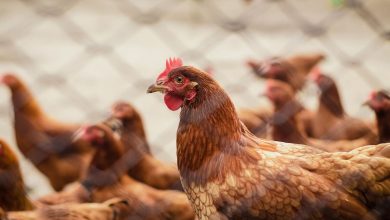BROODING MANAGEMENT

Dr Sandeep Kour, Dr Yash Bhargava, Dr Sunil Kumar and Dr Asma Khan
F.V.Sc & A.H., Sher e Kashmir University of Agricultural Sciences and Technology, Jammu
Brooding is the period immediately after hatching when the chicks need special care and management for their survival.A recently hatched chick has no mechanism to regulate its own body temperature hence, it cannot maintain its body temperature properly for the first weeks leading to improper development of internal organs, responsible for digestion, thus the chick will not be able to digest the yolk completely. The main purpose of brooding is to provide the correct temperature to the chicks. Without the correct body temperature, the chick will not take adequate food and water. This leads to poor growth, retardation and poor development of internal development, resulting in poor productivity in the future
Classification of brooding: Brooding is classified into natural and artificial brooding.Natural brooding is done with the help of broody hens after hatching, up to 3 to 4 weeks of age.In artificial brooding large number of baby chicks are reared in the absence of broody hen.Equipments used for brooding are called brooders.Brooder comprises of three elements:
1. Heating source
2. Reflectors
3. Brooder guard
Heating source may be electrical, gases like natural gas, LPG and methane, liquid fuel like kerosene, solid fuel like coal, wood can be used as a heating material
Characteristic of Brooder Guard
• Guards should be made from materials like cardboard sheet, GI sheet, wire mesh, and mat etc. depending upon the season of brooding
• It helps in preventing chilling and piling
• Height of Guard should be approximately 16 inches to 18 inches
• Guards will ensure chicks stay near the source of heat
Location & Direction of Brooder House:
The brooder house must be away from the all other poultry house. The minimum distance between brooder house and other poultry structure is minimum 100 meter, the construction of brooder house in such a direction that the fresh air should first enter in to the brooder house than it passes from other house. It should be constructed in east to west direction
Preparation of Brooder House:
Brooder house should be ready for the chicks before they are put in house. First the brooder house should be scrubbed and cleaned at least one week before the chicks arrive in brooder house. If old litter present in brooder house, it should be first removed and required equipments should be cleaned with disinfected solution. When house and equipment are properly cleaned, the house should be allowed to dry out thoroughly. If house is air tight than better to fumigate brooder house and equipment using a three times higher concentration of formaldehyde gas. Normally for the fumigation take a two part of Formalin and one part of potassium permanganate. e.g. 35 ml of formalin and 17.5 gm potassium permanganate is sufficient to disinfect 2.83m3 space which is known as 1X fumigation (add potassium permanganate in formalin).
For deep litter system of rearing, litter materials like paddy husk, wood savings, ground maize cob, chopped straw, saw dust, groundnut shell, dried crushed sugar can be used. Mostly the litter materials are selected based on the locally availability and cost. Litter materials to a depth of 6 – 9 cm in winter season and 3 – 4 cm in summer season for better insulation should be uesd. For the first few days, spread a simple paper or news paper on litter materials along with sprinkle feed or ground maize grit. This will help to avoid the chicks eating the litter materials. After 3 days remove the paper and evenly distribute feeder and waterers around the brooder. Switch on the brooder at least 24 hours before the chicks arrive. If using the hanging feeder in the brooder houses than provide three hanging feeder of 36 cm diameter with 12 kg capacity are enough to rear 100 chicks in brooder house.
Brooder House Temperature:
Adjust the electric brooder for 24 hours before the arrival of chicks and adjust the temperature to 95°F (35°C) at the edge of the brooder 2 inches (5cm) above the litter during the first week. Lower the temperature by 5°F (2.8°C) each week until it reaches 70°F. A temperature of 21°C appears to be ideal during growing period.
Ventilation: Fresh air is required for well being and good health of chicks. Poor ventilation results in accumulation of carbon monoxide, ammonia and wet litter condition in brooder house. Concentration of carbon monoxide higher than 0.01 percent is poisonous to chicks. Ammonia irritates the eyes of chicks and retards growth. The level of ammonia should be less than 10 PPM.
Space: 45 – 60 sq cm space is enough per chicks in electric brooder for first week, for broiler birds, 1.5 sq foot space/bird is enough to rear.
Lighting: 23 hour photoperiod and one hour darkness in young stock is advantageous over the continuous lighting as the former allows maximum growth while giving the birds some experience of darkness so that they are less apt to panic during electricity failure. Light effect on growth rate is mainly due to the type of chick activity which has a bearing on their food intake induced by the period of lighting.
Vaccination: Only three vaccines are required in for broiler rearing. Vaccination against Marek’s Disease, New Castle Disease (Ranikhet) and Gumboro Disease are done.
Debeaking: It helps in preventing pecking injuries and cannibalism among chicks. It is carried out day one and 6 weeks of age. Whenever incidence of cannibalism occur in flock than debeaking operation should carried out with electric debeaking equipment.

